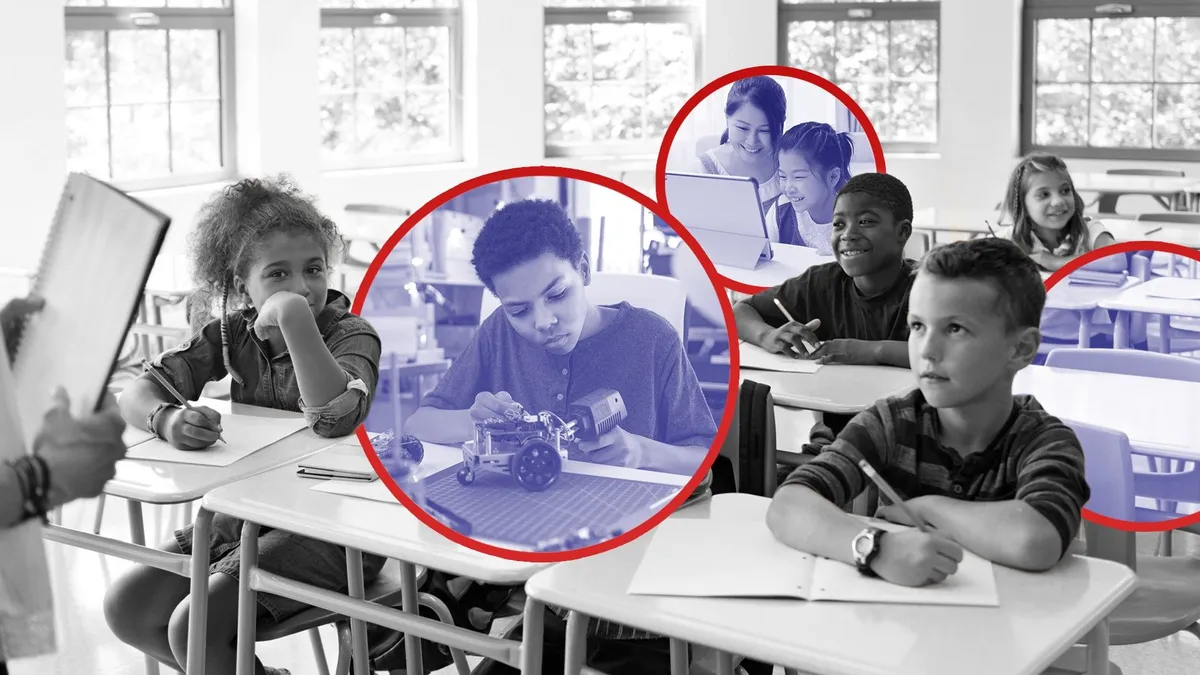Editor's note: This is the first installment of Fast Forward, a recurring column focused on long-term cultural and technological shifts impacting public education. This edition focuses on the implications of reacclimating students following the coronavirus pandemic.
As superintendents and principals emerge from two months of distance learning to discuss building reopening plans, leaders are being ushered to rethink daily operations and traditional approaches to learning. Among the priorities: student reacclimation.
Educators are discussing providing everything from social-emotional support to diagnostic testing as ways to ease students back into the classroom when they eventually return from months of social isolation, personal losses and other possible stresses.
But efforts to reacclimate students will also likely last beyond the pandemic, with many educators foreseeing parents will expect practices put in place now to become long-term changes. Others are saying embracing these shifts will be necessary for traditional schools to compete with, or at least survive amid, charter and private schools.
"I hope we emerge with a ‘New Deal’ moment where educators ask, 'What can we do to reorganize?'" said John King Jr., CEO of The Education Trust and a former secretary of education under the Obama administration.
SEL, connections before academics
With major life changes ushered in by the pandemic, superintendents and principals are focusing on rekindling relationships and providing SEL support when buildings reopen rather than picking up where teachers left off with instruction.
Though students, parents and educators are worried about learning loss, Ithaca City School District Superintendent Luvelle Brown said assessments will not “happen the moment we enter our spaces.” While “there will be a time and place for it,” he instead plans to spend the first month, or more, to “reestablish the community instead of putting tests in front of them.”
Karen Niemi, president of the Collaborative for Academic, Social and Emotional Learning, said leaders must “think innovatively about how we’re structuring the school day so that we can use that time to prioritize relationship building and support structures for teachers and for students.” The organization works to advance and implement SEL practices and policies.
That means planning now to facilitate teacher collaboration time, bring together student advisories, and provide PD, teacher prep and credentialing paths around trauma-informed practices.
Melissa Schlinger, vice president of practice and programs at CASEL, said she’s already seen an increased interest from districts on SEL practices and hopes that interest translates to long-term change in policy and practice.
That priority is also reflected on the federal level, with the CARES stimulus package and previous legislation allocating funds that could be used for mental health resources in schools. More funds are also expected to work their way down with an additional legislative package in the works.
Minding gaps during diagnostic testing and interventions
When the time does come to assess students’ learning loss and provide academic support, there will need to be multiple and simultaneous approaches to bridging gaps and accounting for those losses.
“At a minimum, you want to have assessments connected to high-quality curriculum, thoughtful interim assessments to see how kids are progressing and smart interventions when kids are behind,” King said.
And superintendents and principals are looking for ways to do that in a way that doesn’t exacerbate existing gaps.
“Quite frankly, we can look at our data and predict where young people are [academically] based on what they look like and where they’re from,” Brown said.
Depending solely on diagnostic testing, he said, could push marginalized students into remedial programs while privileged students reap the benefits of newfound technology and blended learning options.
“The worst way to build community would be to put a test that is not culturally responsive and that is standardized to tell [students] that they aren’t achieving or not in a place that they should be,” Brown explained.
Instead, conducting surveys and facilitating conversations where students share their achievements or academic worries can be other ways to assess students’ progress.
“Start by figuring out how to have conversation starters with students in meaningful ways to figure out how they’re doing and what they’re feeling in a way that isn’t perceived as an evaluation and an assessment,” Niemi said.
'Customer-service' blended learning approaches
The pandemic has also forced districts to incorporate instructional technology, catalyzing a shift to ed tech and personalized learning many had been working toward slowly. “We have, over the last 20 years, found ways to optimize that delivery model with uneven levels of success,” said Joel Rose, CEO of New Classrooms, a nonprofit focused on helping schools navigate classroom and curriculum redesigns.
He hopes the pandemic “challenges that basic construct and flips the paradigm” so educators meet students where they are, instead of the other way around.
“Up until now, it’s up to the kid to meet the expectations of the school,” Rose said. “We hope this moment catalyzes a flip of that paradigm where the onus is on schools to meet students where they are.”
Brown calls this a “customer-service approach,” where districts will offer multiple learning options (in-person, remote or blended) based on families’ needs. This approach could also include giving students and their parents a certain amount of agency in their learning, as distance learning allowed.
“We’re going to have to offer that as a new normal, led by parental choice and their own situations, and we’re going to have to be comfortable with that,” Brown said.






















